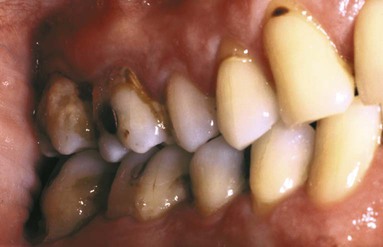

To read more about Lares, go to Lares Dental. Live patient video of WPT and subgingival calculus removal can be viewed on the Lares Research Web site at Lares Dental. Lares Research provides a two-day advanced training course dedicated to laser treatment of periodontal disease using WPT.

WPT is a minimally invasive procedure to treat periodontal disease without scalpels or sutures in a general or specialty practice. WPT optimizes the use of Er:YAG and Nd:YAG laser wavelengths from the dual-wavelength PowerLase AT to treat the hard- and soft-tissue sides of the diseased pocket. The new indication for use is an important element of the Lares Research laser treatment protocol for periodontal disease: Wavelength-optimized Periodontal Therapy or WPT.
SUBGINGIVAL CALCULUS REMOVAL PROFESSIONAL
At your routine dental visits, your dental professional will remove all existing calculus deposits and help get your smile in tip-top shape.CHICO, California-Lares Research and Fotona have announced receiving FDA 510(k) clearance to market the PowerLase AT Er:YAG laser for the removal of subgingival calculus in periodontal pockets with periodontitis. You can decrease your chances of developing calculus deposits by establishing good oral care habits, such as brushing your teeth twice a day, cleaning between them with floss and using an oral rinse. To ensure that your oral care routine reduces and minimizes calculus formation, focus on controlling plaque buildup at home. This condition, termed gingivitis, can worsen into a more serious form of gum disease if left untreated. The ADA notes that as supragingival calculus develops, the gums can become swollen and bleed easily. It's important to remove calculus as soon as it's detected to prevent further bacteria buildup and retain gum health. In addition to these, new technologies - such as ultrasonic and laser tools - have also emerged to help dentists and hygienists detect and remove calculus. A scaler is another common handheld instrument used to remove calculus above the gumline, as a review in the Saudi Dental Journal notes. One such example, according to the IJDHS review, is an instrument known as a dental explorer, which helps the dental professional feel and remove calculus. While your dentist and dental hygienist can typically detect supragingival calculus visually, dental professionals also receive extensive training using equipment other than their eyes. Calculus above the gumline can appear whitish or yellowish in color. The parts of your hand and wrist that extend visibly outside the sleeve would be considered supragingival (above the gumline), whereas anything unseen below the sleeve would be considered subgingival (below the gumline). Universal curettes are also available with rigid shanks in select patterns for moderate to heavy calculus removal. The blade of a universal curette has a round toe and back, and two cutting edges for scaling, making it an efficient design for scaling the entire mouth. If you think of the edge of the gums like a shirt sleeve and imagine the tooth is like your hand in the sleeve, you can get a better image of this classification. for moderate calculus removal on supragingival and subgingival tooth surfaces. The difference between the two types is the location of the calculus relative to the edge of the gum tissue. Types of CalculusĪccording to the IJDHS review, there are two types of dental calculus: supragingival and subgingival. These minerals, which include calcium and phosphorous, stick to the biofilm and harden with it over time, creating a rock-like adhesion on the tooth called calculus or tartar. As colonies of bacteria (called biofilm) develop in the mouth, they collect the minerals found in your saliva and in the foods you eat. The American Academy of Periodontology notes that while dental plaque can be removed at home, calculus must be removed by a dental professional, as it strongly adheres to the tooth surface.Ī review in the International Journal of Dental and Health Sciences (IJDHS) explains that plaque can form on any surfaces inside the mouth where nutrients are available to feed the bacteria. Once it hardens, the calculus - also called tartar - sticks to the tooth like a barnacle to a boat. PlaqueĪccording to the American Dental Association (ADA), calculus forms when sticky plaque on the teeth is not removed and is left to harden. But do you know about supragingival calculus? Read on to learn what supragingival calculus is and how establishing a good oral care routine can prevent bacteria buildup in the mouth.

Your dental professional has probably told you about bacteria and plaque and their effects on your oral health.


 0 kommentar(er)
0 kommentar(er)
